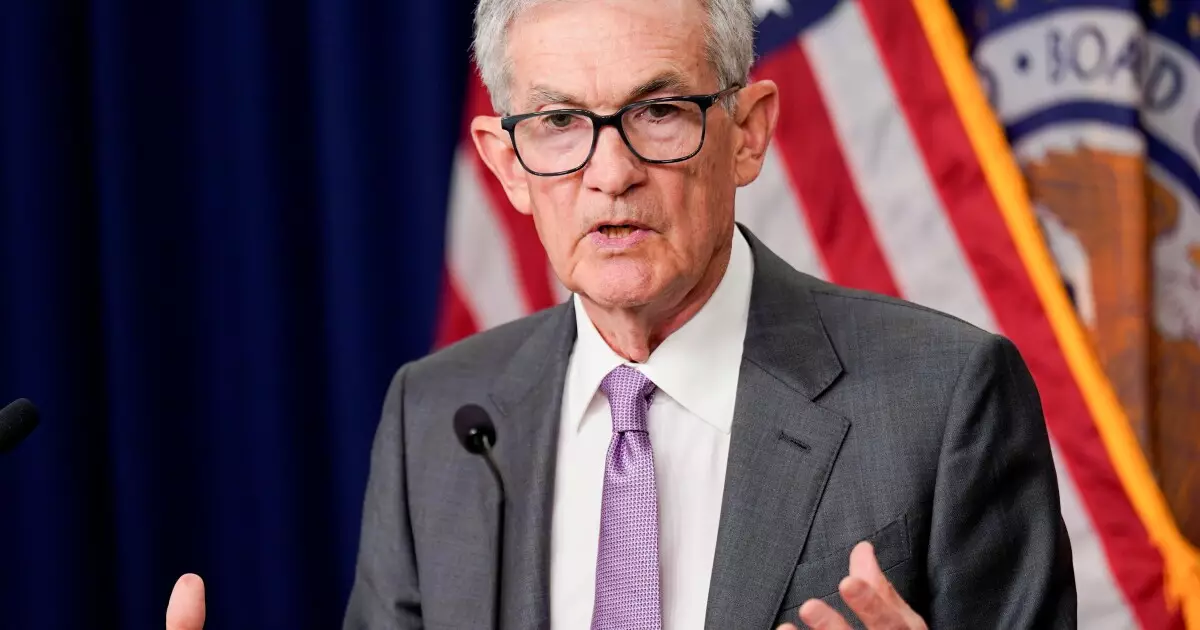In the realm of macroeconomic policy, the Federal Reserve (Fed) primarily relies on two critical indicators: inflation and unemployment. These figures serve as barometers for economic health and guide the Fed’s monetary policy decisions. However, in a recent dialogue, Fed Chair Jerome Powell introduced an additional metric that deserves attention: personal savings. His insights into this often-overlooked data point reflect a more nuanced understanding of economic dynamics that could shape policy in the future.
The symmetry between Gross Domestic Product (GDP) and Gross Domestic Income (GDI) is vital to assessing economic vitality. Historically, a disparity between these two measurements can signal potential economic weaknesses, particularly when GDI lags behind GDP. This discrepancy suggests a lower savings rate, which is typically associated with economic distress as consumers struggle to save in an environment of rising expenses. Powell’s recent statements highlighted revisions in GDI that led to an upward adjustment in the savings rate from 4.8% to 5.2%, indicating a stronger economic foundation than previously thought.
Powell emphasized that the convergence of GDI and GDP addresses prior concerns regarding consumer spending habits. He noted that the uptick in the savings rate implies stronger fiscal health among households, suggesting that spending can continue at robust levels. Such observations are critical, as increased consumer spending is a cornerstone of economic growth. Furthermore, the higher savings rate alleviates fears that consumers were overspending without adequate income to support their expenditures.
The implications of Powell’s observations extend beyond mere statistics; they reflect a fundamental shift in consumer behavior and economic resilience. The notion that savings are burgeoning on consumers’ balance sheets indicates that households are better prepared to weather financial storms, thus supporting sustained economic growth, even amid uncertainties.
Labor Market Trends and Economic Forecasting
During a recent session at the National Association for Business Economics (NABE) conference in Nashville, Powell elaborated on the prevailing labor market conditions and their impact on the Federal Open Market Committee’s (FOMC) strategy. With critical data inputs such as the consumer price index and personal consumption expenditure index on the horizon, Powell refrained from making premature judgments about future policy decisions. The FOMC’s recent decision to lower interest rates by half a percentage point—the first reduction since 2020—marks a significant shift in direction after an extensive struggle against inflation.
Powell clarified that the rate cut, though indicative of adaptive policy measures, does not inherently signify economic frailty. Rather, this recalibration of monetary policy aims to sustain labor market strength while promoting moderate economic growth. Such forward-looking statements reflect the Fed’s commitment to maintaining a balanced approach, carefully weighing risks on both sides of the economic spectrum.
Looking forward, Powell indicated a flexible stance regarding interest rates, with the expectation of possible further reductions during the remaining meetings of the year. However, he was prudent in cautioning that these plans were not predetermined and would depend on the evolving economic landscape. The emphasis on a “neutral” policy stance highlights the Fed’s openness to adjusting its approach based on real-time economic indicators rather than adhering to a rigid framework.
Revising monetary policy based on current economic conditions reinforces the importance of adaptability in fiscal governance. Powell’s acknowledgment of the uncertain but dual-sided risks surrounding economic projections indicates a keen awareness of the complexity of financial markets and consumer behavior.
In sum, while inflation and unemployment remain pivotal in shaping monetary policy, the recent emphasis on personal savings presents a more comprehensive picture of economic health. Powell’s focus on the importance of GDI and the implications of increased savings are reassuring in an uncertain environment. As the Fed navigates the shifting economic landscape, its commitment to a nuanced understanding of multifaceted data points will be crucial in fostering a stable economic future. The development of a more resilient consumer base, as evidenced by rising savings rates, could act as a solid foundation for sustained economic activity, suggesting that the outlook may not be as bleak as it sometimes appears.

